Description/achievement of initiative
Our aim is a plastic-free sea. The plastic pollution problem comes from multiple sources, therefore we are tackling not only one, but the majority of them. We are working on the prevention, awareness, education, retrieval and reuse of marine litter. Recycled Island Foundation is retrieving marine litter in rivers and ports preventing plastic to enter our seas and oceans.
Implementation methodologies
Our approach is a combination of the retrieval of floating plastic in rivers with Litter Traps and cleanups, creating circular products and educating people. Our Focus product is the Litter Trap.
After thorough analyses of the morphological and physical characteristics of the rivers, as well as a detailed study of wind and water stream, RIF designs a modular Litter Trap that can be shipped to the country of destination inside a common container. The future Litter Traps will be similar to the ones in use in Rotterdam and Belgium. This assures us about its correct functioning since a pilot project of 1.5 year has already been carried out and the device has been successfully tested.
The Litter Trap is a floating device able to capture plastic litter carried by the river flow, made from recycled plastic retrieved from the rivers. The device is placed in the opposite direction of the water stream making our product both cost efficient and energy autonomous. In fact, plastic debris is carried towards the opening of the Litter Trap by the stream and it does not require energy of labor force to function. Once the litter is trapped inside, it will not be able to “escape” even if the stream changes direction, thanks to an innovative semi-closed door system.
Neither the installment of the traps nor its operation will cause harm to the environment, in fact, the three submerged panels are perforated in order to create escape routes for fish and other animals. Birds can also fly through the open part of the trap.
The trap is floating on the surface but is also anchored to the bottom of the river, to prevent it from drifting away. Not having a fixed anchoring system allows the Litter Trap to “swing” up and down on the poles meaning that in case of water level fluctuation, the trap will be able to continue its capturing function.
Depending on the quantities of litter, the traps will need to be emptied on a regular base. Studies suggest that in polluted rivers, the machine, with a capacity of approximately 1m³, will need to be weekly emptied.
The Litter Trap will have a length of approximately 5 meters, a width and height of roughly 2 meters. More than half of the trap will be submerged and a platform will ease the maintenance and the emptying procedures.
Arrangements for Capacity-Building and Technology Transfer
Capacity building within Recycled Island Foundation involves building up skills and abilities, such as decision making, policy-formulation, appraisal, and learning. The organization has a strong leadership, mission and strategy, administration (including human resources and financial management), program development and implementation, fund-raising and income generation, diversity, partnerships and collaboration, evaluation, marketing, planning and positioning. Capacity building is used as a way to strengthen the organization so that it can perform the specific mission it has set out to do and thus survives and thrives as an organization. Capacity building is integrated as an ongoing process that incites to continually reflect on our work, organization, and leadership and ensures that we are fulfilling the mission and goals they originally set out to do. The team consists of a people coming from a different background with an overlapping range of expertise, know how, experience and network. Each team member brings his/her own expertise which is refined within the team.
Coordination mechanisms/governance structure
Recycled Island Foundation is managed by the founder and CEO, Ramon Knoester. The CEO is supervised by the Foundation’s board existing of minimum three persons and at least one external advisor.
Decision making by the CEO goes in close consultation with the members of the team and the board.
The board sets out the targets of the organization and develops an annual plan and multiple (up to 5 years) year plan. The board comes together at least every 3 months to discuss the proceedings.
The team (employees) turns the ambition into projects and realizations. The team exists of different expertise and nationalities that support each other in the desired overall and international approach. Every week, the team comes together to discuss ongoing projects and issues.
Partner(s)
City of Rotterdam, The Dutch Ministry of Infrastructure and Water Management

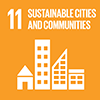
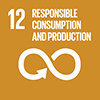
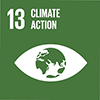
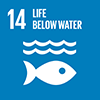
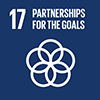
 31-12-2019
31-12-2019
 31-12-2019
31-12-2019
 31-12-2020
31-12-2020
 31-12-2020
31-12-2020
 Time-frame: July 7th 2014 - Ongoing process
Time-frame: July 7th 2014 - Ongoing process